Simulating Amplifier Distortion

Written by Blaine LaCross
This post is a companion piece to the post “Evaluating SINAD - Why it’s NOT Important”. That article, and the video that went with it, was oriented to the objective case against SINAD, THD, and similar metrics, but we know that there’s something to be said for hearing rather than seeing. Using Paul Kane’s wonderful “Distort” software, we replicated the nonlinearities of a few “poorly performing” amplifiers, and applied them to three test tracks: A pure 1000hz sine wave (showing harmonic distortion), a pair of very high frequency tones (allowing difference frequency IMD to be heard with no masking at all), and Nicky Dowling's song “Hiding Out Downtown”.
It should be noted that the following are examples of particular sources, and doesn't represent the way all amplifiers of the indicated type will perform - however this should give you a sense of the differences (or lack of differences in some cases) that can exist among different design types.
Before we begin, here are the default test tones to use as a reference point.
The first is a 1khz Sine Wave reference without any simulated distortion:
The second is two tones of 13 + 14khz simultaneously without any simulated intermodulation products added:
Lastly, here's the reference recording without any simulated distortion:
Nicky Dowling - Hiding Out Downtown
Now that we have a reference point for each, let's hear how they sound while simulating a variety of amplifier distortion products.
Low Feedback Class A Amplifier (Pass's Amp Camp Amp)
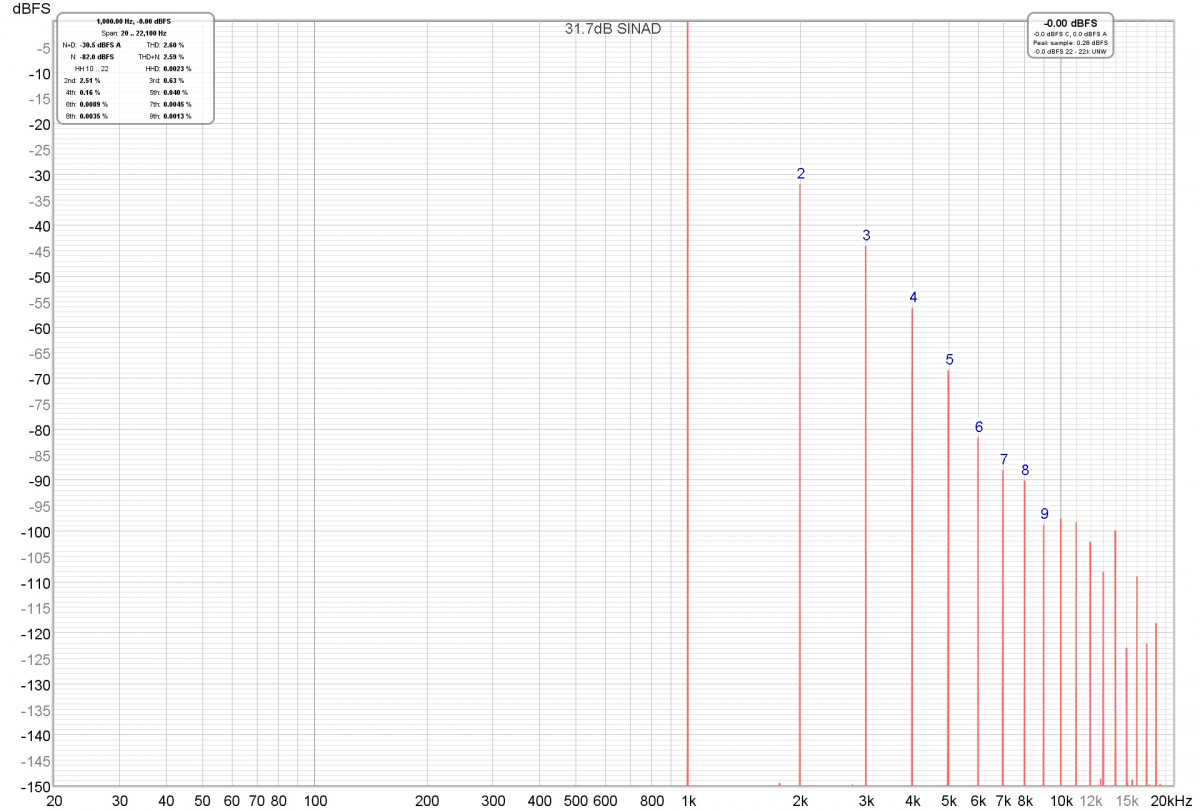
The first simulated amplifier is a DIY discrete design with a class A output stage and very little negative feedback - as a result of lack of feedback, distortion is exceptionally high, leaving the amp with a SINAD of only 31.7dB.
Though the highest distortion harmonics are low order, the sine wave is still audibly distorted.
Now let's test for Intermodulation Distortion (IMD) products. You should hear 13+14khz, which are high pitched tones, and any additional tones you hear will be IMD products.
As with the 1khz tone, the intermodulation products of this highly nonlinear amplifier can be heard pretty easily.
Simulated Class A Headphone Amplifier
The most interesting test is music, however. This amplifier has tens, hundreds, or thousands of times more distortion than almost any other you’ll encounter - how did it treat the song?
Output Transformerless (OTL) Tube Amplifier (Bottlehead Crack)
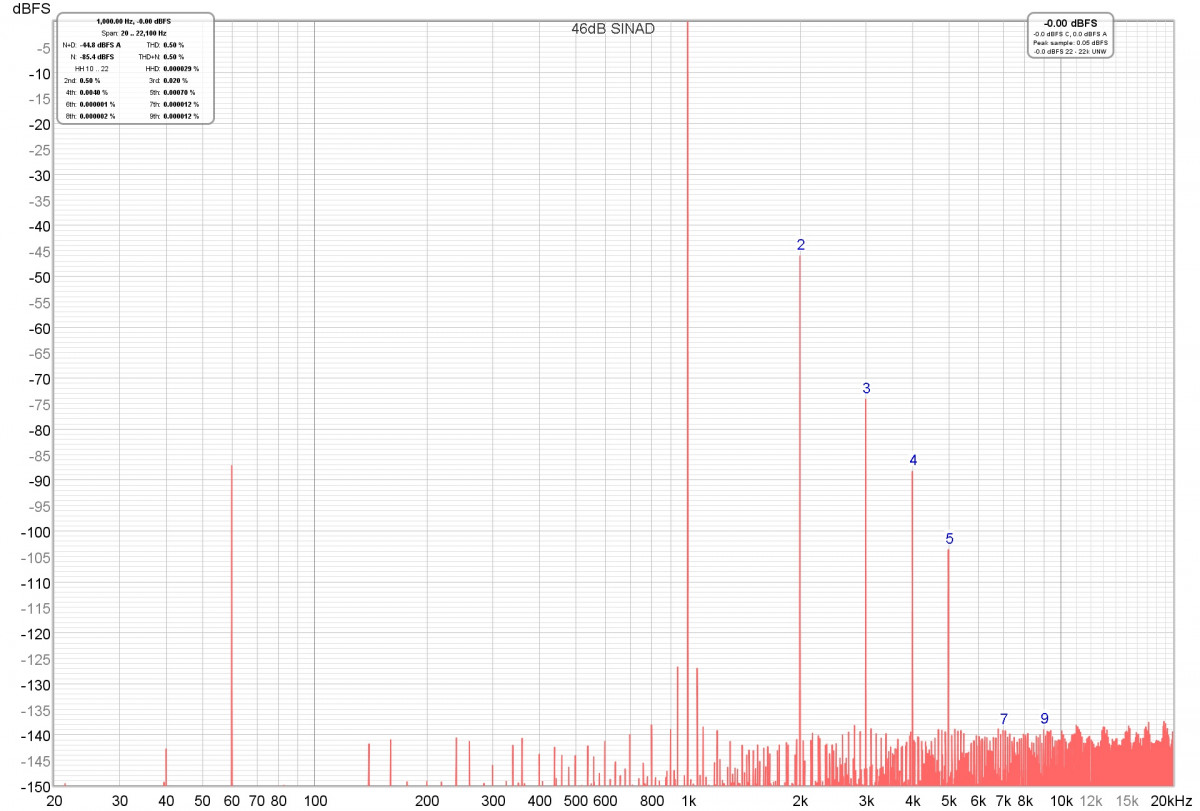
The second amplifier is a classically nonlinear “OTL” tube amplifier. True to its reputation, it has a massive amount of 2nd order nonlinearity relative to all others. We also simulated the measured mains leakage on this unit, using one of Distort’s other nifty features.
Although the distortion of this amplifier is high by almost any standard, its low order puts the 1khz tone at or below the threshold of masking at most levels.
The 2nd order difference frequency product of our high frequency tones, on the other hand, isn’t masked, so odds are you can hear a quiet 1khz tone.
The real test, of course, is how it sounds with music - what do you think? Unacceptable? Inaudible? Somewhere in between?
Ultra-budget Class D Speaker Amplifier (Lepy 2020A)
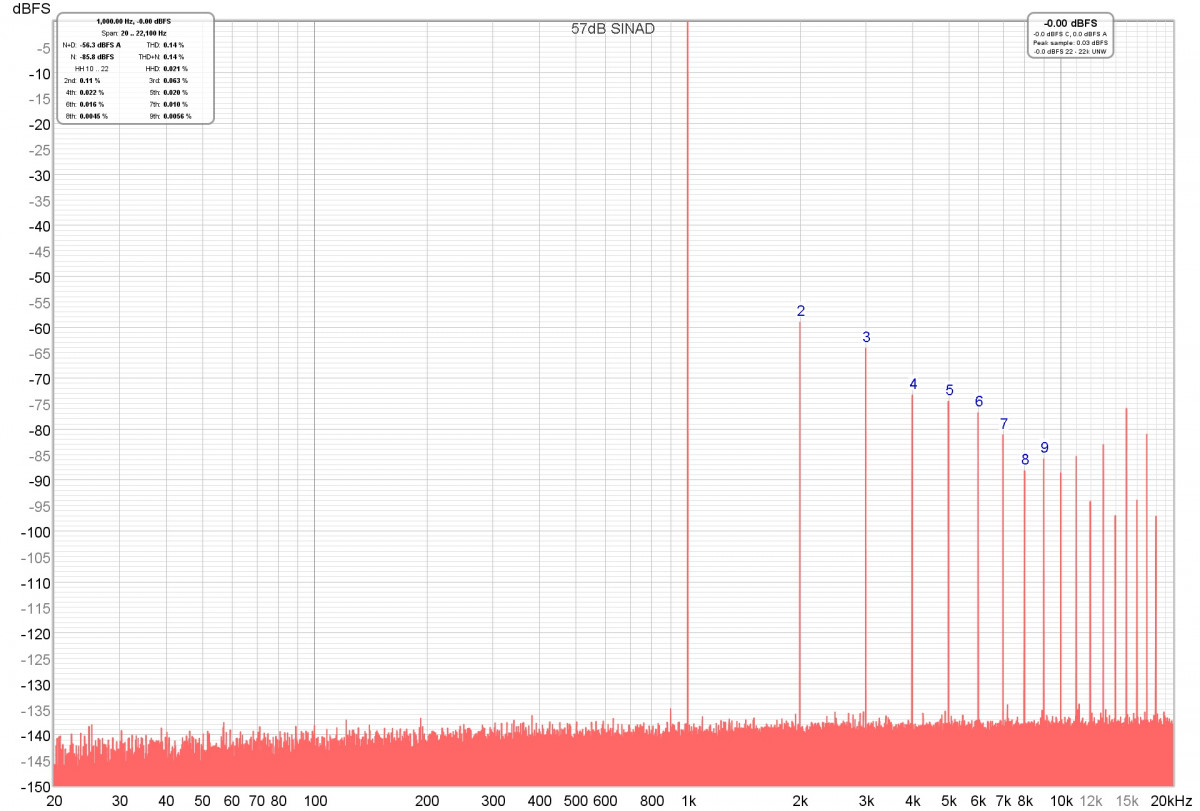
This adorable little class D (“switching”) speaker amplifier can be purchased for less than $30, and uses one of the cheapest, most “commodity” amplifier chips in the market. Nobody would call this “hifi”, but how does it sound?
As with the tube amp, though the distortion is high by modern standards, the lower order harmonics are firmly below the masking threshold at most levels. The higher harmonics might just peak out of the threshold of hearing at high levels, however - but we don’t suggest trying to test that, for your ears’ safety!
With the 1khz difference frequency product at -60~dB, it’s possible to hear, but you’ve got to have a very loud volume to begin with - probably higher than you should have. Be careful with your ears, you only get one pair.
Simulated Class D Headphone Amplifier
As always, the true test is in music - let us know what you think in the comments below!
PC Motherboard Integrated Audio (Dell XPS 8930)
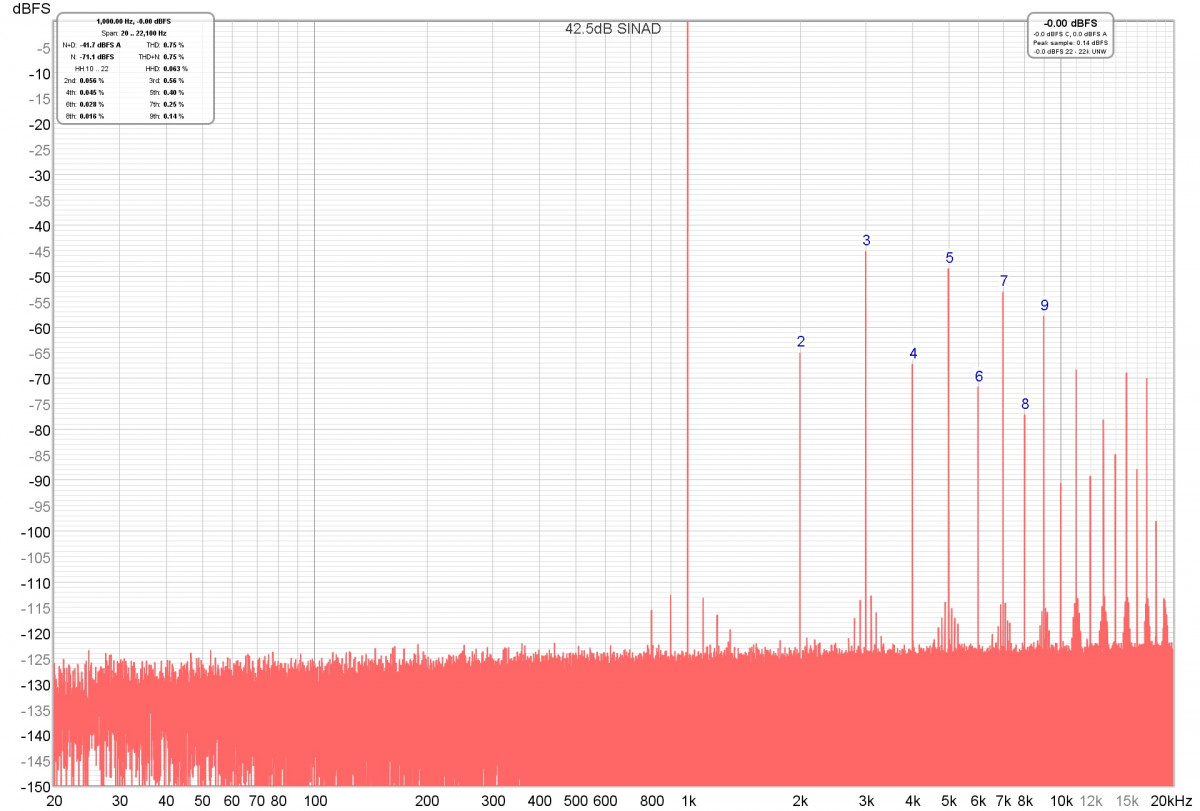
Okay, we were being silly with this one. This unnamed PC brand’s integrated RealTek “HD Audio” measures impressively badly, although in its defense the designers likely never expected it being put to this test. Interestingly, its distortion is highly odd-order, indicating that its nonlinearities are symmetrically affecting both the negative and positive sides of the wave.
You can probably hear some “sizzle” in this one - the 2nd and 4th harmonic are comfortably below masking, but the 5th and possibly 3rd poke through.
Here the intermodulation products form a spray across the treble and upper midrange, not well masked by the 13 and 14khz fundamental frequencies.
Are odd-order nonlinearities really less melodious? You tell us.
Budget DAC-Amp (iFi Zen Dac)
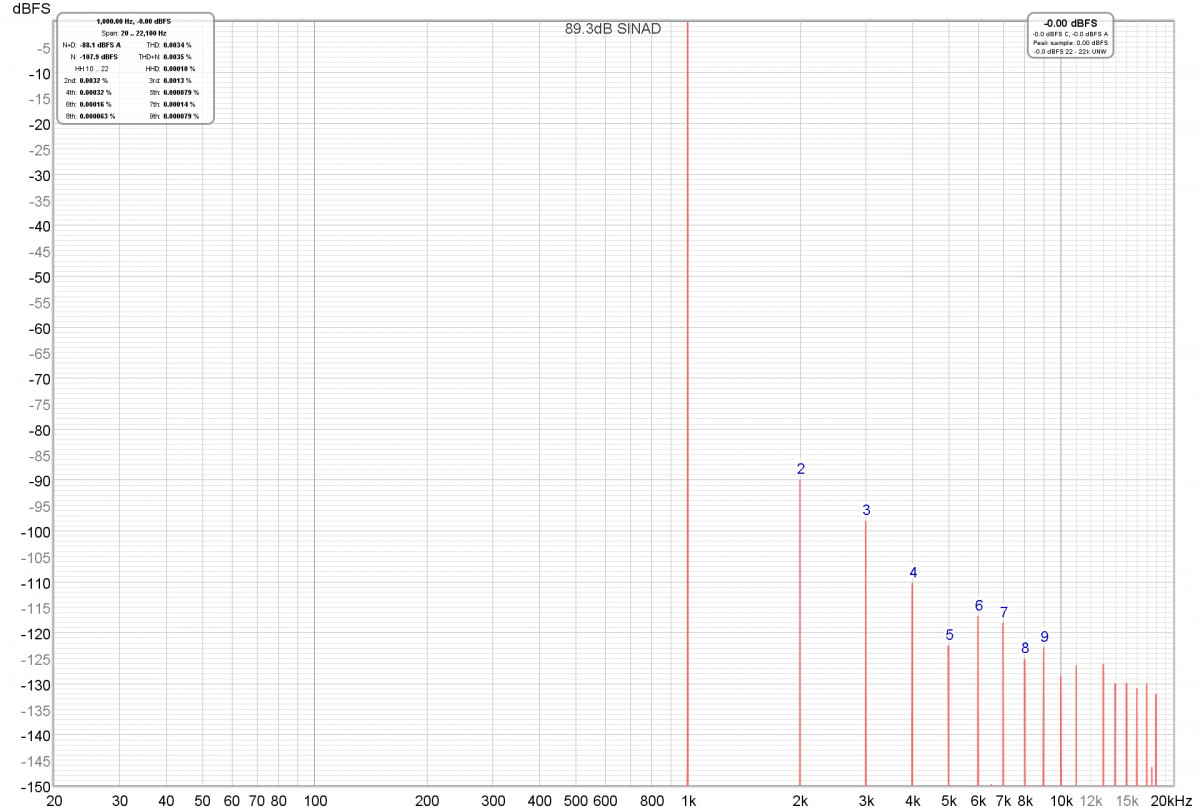
Much better performing than anything else in this comparison, this budget DAC-amp might seem like a bad fit, but it’s worth noting that it still measures worse than many phone dongles in SINAD - is that a deal breaker for you, subjectively?
Do you hear the distortion?
Is this thing on?
Of course, we’d love to hear your thoughts about what this did to the music!
-Blaine LaCross
---
Discuss DACs and headphone amplifiers on the HEADPHONE Community Forum here.
---
